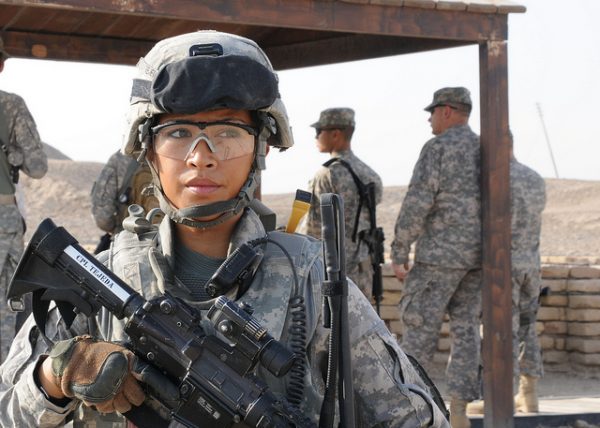
Sexism is not simply about individual bias or action. In fact, the structure of organizations can facilitate sexism so that discriminatory practices occur even when individuals do not express sexist attitudes. In new research, Stephanie Bonnes demonstrates how bureaucracies and male-dominated hierarchies within the U.S. military facilitate discriminatory behavior towards women, like sexual harassment or abuse.
Bonnes conducted in-depth interviews with 33 U.S. service women, including 21 on active duty. More than a third of her interviewees experienced what Bonnes calls, “bureaucratic harassment,” where powerful individuals manipulate administrative policies and procedures to undermine their colleagues’ professional careers. For example, superior officers delayed women’s promotions, threatened to withhold benefits or cancel holiday leave if they reported sexual harassment and abuse. One commander even failed a service woman on an exam when she would not comply with his wishes to take a desk job, and prohibited her from retaking the test.
Black and Latina service women reported that superiors cited their “attitudes” in performance reviews or infraction reports, reflecting racism as well as sexism. For instance, a White male officer reprimanded Joanna — a Latina officer — for disrespecting a superior officer, even though he was the same rank as her. In blaming Black and Latina women for their “attitudes,” these men rely on stereotypes about women of color, specifically that they are easily angered and thus unprofessional.
Bonnes argues that service women’s treatment is not simply the result of explicitly sexist commanders. Rather, the military’s policies, procedures, and its hierarchical structure — imbued with some level of discretion for those in power — promote discrimination against service women. And when commanders use their discretion to give infractions or poor performance reviews, service women face serious consequences, including ineligibility for opportunities like pay raises because of holding lower ranks, and time and energy spent responding to infractions and abuse instead of devoting that energy to other important aspects of their lives. In short, Bonnes’ research allows us to understand how institutional structures — rather than simply sexist individuals — can reproduce gender inequality if left unchecked.

Comments 1
Colleen — September 27, 2019
I was among a group of female soldiers training at Fort Benjamin Harrison Indiana in 1985 winter time. This space trained soldiers Airmen and Marines and everybody from all branches. I distinctly recall a small group of US Army females being brought into a mandatory meeting during which time we were instructed that we needed to look prettier in ourBDUs so we were literally instructed as to the use of wearing cosmetics during class and prettying up our hair so as to try to look as pretty as the Marine females who were mostly going around in their class A's at the time. We were informed that several comments from the higher-ranking on the base, all male, that the Army girls were not pretty enough and they were tired of seeing ugly women walking around the base and we need to look prettier. Literally. I'm not just paraphrasing I'm trying to relate exactly the words used in the sentiment delivered very harshly during that so-called class. We were instructed as to the application of lipstick and eyeshadow and mascara. I cannot recall if they ask for blush. I am still disgusted about this and I sure hope things have changed.